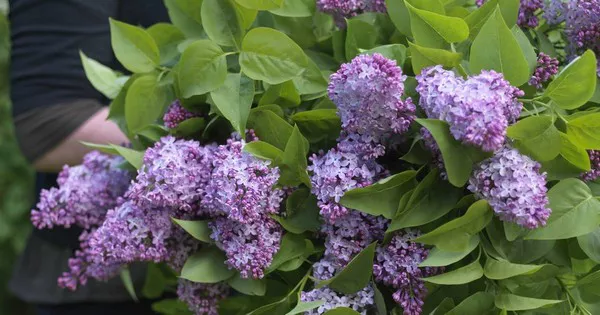Flowers have long been admired for their beauty and fragrance, but did you know that many are also edible and can be used to elevate your culinary creations, particularly cakes? Incorporating flowers into cake decoration not only adds a visually stunning touch but can also introduce unique flavors and textures.
Choosing Edible Flowers for Cakes
When considering which flowers to use in cake decoration, it’s crucial to ensure they are not only visually appealing but also safe for consumption. Not all flowers are edible, and some may be treated with pesticides or other chemicals. Opt for organic, pesticide-free flowers from reputable sources or, better yet, cultivate your own edible garden. Some popular choices for edible flowers include pansies, violets, nasturtiums, calendula, and roses. However, always cross-reference with reliable sources to verify the edibility of specific varieties.
Safety First: Know Your Flowers
Before embarking on your culinary flower adventure, it’s essential to familiarize yourself with the specific parts of the flowers that are safe to eat. In many cases, it’s the petals that are used for culinary purposes, while other parts, such as stems and pistils, may be inedible or even toxic. Exercise caution and ensure that you are confident in the edibility of the selected flowers before incorporating them into your cake creations.
Preparation Techniques for Edible Flowers
Proper preparation is key when working with flowers in cake decorating. Start by gently washing the flowers to remove any dirt or insects. Pat them dry using a paper towel or a soft cloth. Next, carefully remove the petals from the stem, discarding any unwanted parts. It’s advisable to taste a small amount of each variety beforehand to familiarize yourself with its flavor profile, helping you decide how much to use in your cake.
Infusing Flavors with Edible Flowers
Beyond their visual appeal, edible flowers can impart subtle, nuanced flavors to your cakes. Experiment with different varieties to discover unique taste combinations. For instance, lavender adds a fragrant, slightly sweet note, while rose petals contribute a delicate floral essence. Nasturtiums provide a peppery kick, and violets bring a subtle, grassy flavor. Consider infusing your chosen flowers into liquids like syrups or creams before incorporating them into your cake batter or frosting for a more uniform distribution of flavor.
Creative Cake Decorating with Edible Flowers
The versatility of edible flowers opens up a world of creative possibilities for cake decorating. Use whole flowers to create a visually striking arrangement on top of your cake or delicately place individual petals for an elegant touch. Experiment with crystallizing flowers by coating them in sugar for added texture and sweetness. Pressing flowers between the layers of a naked cake can create a stunning visual effect, while incorporating edible flowers into fondant or icing allows for intricate designs.
Colorful Combinations: Choosing Flowers for Aesthetic Appeal
In addition to flavor, the color palette of edible flowers can contribute to the overall aesthetic of your cake. Vibrant pansies in hues of purple and yellow can add a burst of color, while the deep red of rose petals creates an elegant contrast. Consider the theme of your event or the recipient’s preferences when selecting flowers to ensure a cohesive and visually pleasing cake design.
Edible Flower Varieties for Different Seasons
One of the advantages of using edible flowers in cakes is the variety available throughout the seasons. Embrace the changing colors and flavors by selecting flowers that are in season. Spring offers a bounty of choices like daisies and lilacs, while summer brings an abundance of options, including marigolds and sunflowers. Autumnal cakes can feature the warm tones of chrysanthemums, and winter creations can be adorned with pansies or violas that withstand cooler temperatures.
Cultural Significance of Edible Flowers in Cuisine
The use of flowers in culinary arts has deep roots in various cultures around the world. From the delicate cherry blossoms used in Japanese cuisine to the vibrant saffron-infused dishes of Indian cooking, flowers have been incorporated into traditional recipes for centuries. Understanding the cultural significance of edible flowers can add an extra layer of appreciation to your culinary creations and provide inspiration for unique flavor combinations.
Sourcing Edible Flowers Responsibly
As the popularity of edible flowers in culinary creations grows, it’s essential to source them responsibly. Choose suppliers that prioritize organic and sustainable practices, ensuring that the flowers you use are free from harmful chemicals. If you’re cultivating your own edible garden, follow organic gardening principles to minimize environmental impact. By making conscious choices, you not only contribute to the quality of your cakes but also support environmentally friendly practices in the cultivation of edible flowers.
Legal Considerations and Allergen Awareness
Before incorporating flowers into your cakes for commercial purposes, be aware of legal considerations regarding the sale of food items containing flowers. In some regions, there are regulations governing the use of certain flowers in food products. Additionally, consider allergen awareness, as some individuals may have allergies to specific flowers or pollen. Clearly label your cakes to indicate the presence of edible flowers and inquire about any potential allergies when serving your creations to others.
Conclusion
In conclusion, the world of edible flowers opens up a realm of possibilities for elevating your cake creations both aesthetically and gastronomically. From selecting the right flowers to understanding their flavors, preparing them safely, and incorporating them creatively into your cakes, this guide serves as a comprehensive resource for anyone looking to add a touch of floral finesse to their culinary repertoire. Embrace the beauty and versatility of edible flowers as you embark on a journey to transform your cakes into stunning, flavorful works of art.


